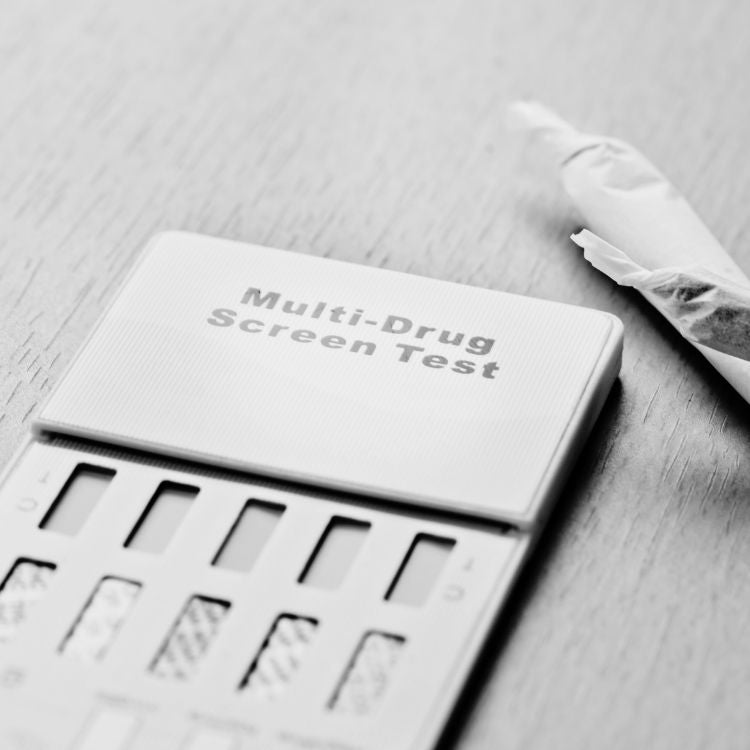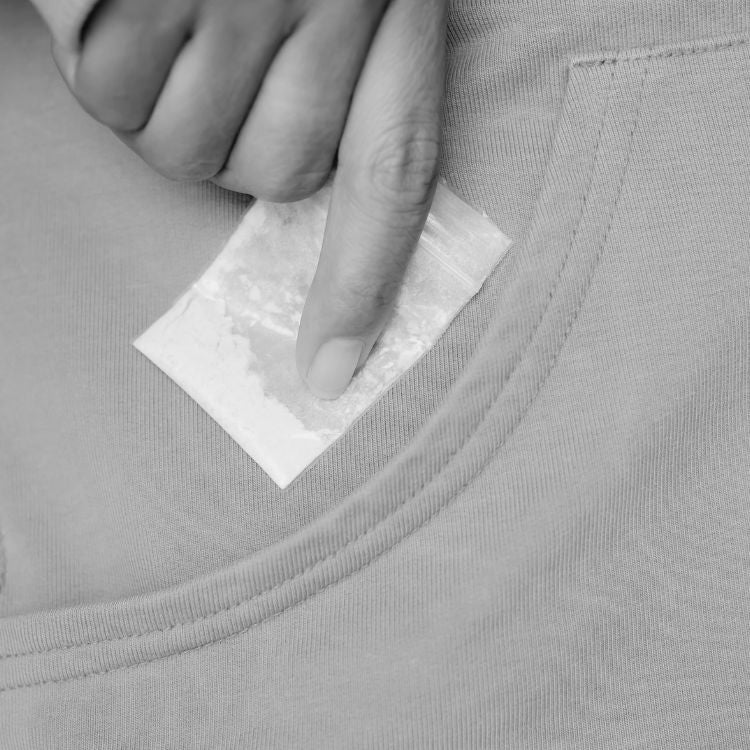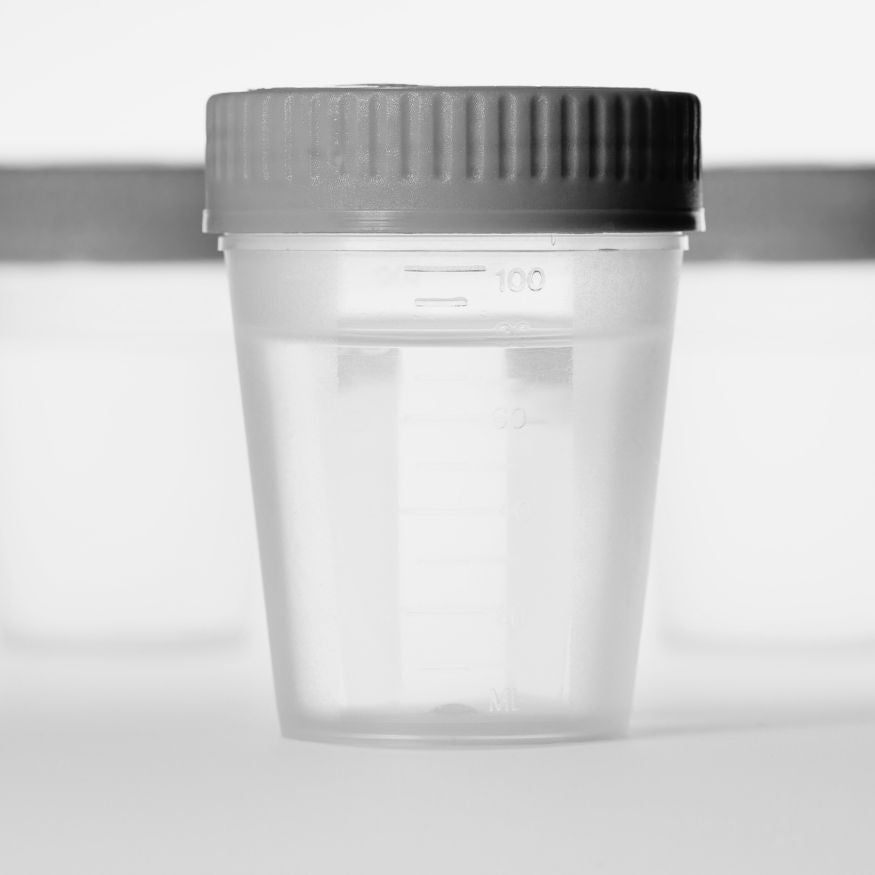We’ve all been fairly warned about the significant dangers of driving under the influence of alcohol – but what about drugs? While there’s certainly less education around drug-impaired driving, it carries as much weight as drink driving, both from a road safety perspective and in terms of potential legal implications. A 2021 study from the Centre for Accident Research & Road Safety reported that drivers who had illicit drugs in their system were 10 times more likely to be responsible for causing a crash.
It’s critical to make safe driving choices to ensure the safety of yourself and others, and to avoid the consequences of failing a random drug test should you be pulled over while under the influence of drugs. Read as we break down everything you need to know about roadside drug testing, including how to use Drug Alert self-testing as a safety precaution before you drive.
Can you be pulled over for a random drug test while driving?
Random roadside drug testing, just like alcohol breath testing, is employed across every state and territory in Australia. You can be pulled over by a police officer on a motorcycle, highway patrol car, or unmarked vehicle and asked to participate in random drug testing. While each state’s individual laws and practices may vary slightly, every Australian jurisdiction uses saliva testing to conduct their analyses.
What is the legal limit for drug driving in Australia?
While we have a ‘legal limit’ for drink driving of BAC 0.05, Australia has a zero tolerance policy for drug driving. This means that regardless of how alert you may feel when you get behind the wheel, if you have even a small trace of a detectable illicit drug present in your system, you can be charged with a criminal offence.
Which drugs will show up on a roadside drug test?
When we refer to a ‘detectable illicit drug’, we mean one of the three types of drug that can show up on a roadside saliva test. These are THC (marijuana), methamphetamine (present in drugs like speed and ice), and MDMA (also known as ecstasy or molly). Roadside drug tests in New South Wales and Queensland also test for cocaine.
If you’ve taken a drug that isn’t detectable, police officers may still be able to investigate further if they suspect you are driving under the influence, by asking you to undertake an impairment test. This is a qualitative behavioural assessment that involves testing your coordination, balance, and alertness. Impairment tests are only in practice in some Australian states.
How does roadside drug testing work?
If you’re pulled over while driving and asked to take a drug test, the police officer will swab the inside of your mouth to collect your saliva, or ask you to lick or spit on a testing device. They can analyse the results of your test on the spot in just a couple of minutes. If your results come out positive, the police officer will notify you of this and your sample will then be sent to a laboratory for a confirmatory second test. Depending on the testing methods used in your state, you may be asked to provide another sample in a different form, such as blood or urine.
In most states, your driver’s licence will be suspended for 24 hours if your test comes back positive for drug use. You won’t be charged until your laboratory results confirm you had drugs in your system, at which point you will receive a notice to attend court.
Whether you can legally drive in the interim between testing positive for drugs and attending court to face charges will be dependent on which state or territory of Australia you live in, and whether you have any pending or former drug charges on your criminal record.
How long should you wait to drive after taking drugs?
Different drugs stay in your system for different lengths of time, which means that the substance you’ve taken will determine how long it is before you are safe to drive again. These periods are just estimates, and will vary depending on your metabolism, your height and weight, how much you’ve taken, and the potency of the dose you have taken.
- Marijuana (THC) can be detected in saliva for up to 24 hours after you have last taken the substance. If you are a heavy marijuana user, this may affect your body’s ability to quickly metabolise the drug, so it’s recommended to stay off the roads for up to 72 hours since your last interaction with the drug.
- Methamphetamines (speed, ice) are detectable in your saliva for up to 2 days.
- MDMA can show up on a roadside saliva drug test for up to 2 days.
- Cocaine is detectable in the saliva for up to 2 days.
If you have mixed drugs, it’s important to remember that your body may take even longer to metabolise these due to the unpredictable combination of substances.
How to stay safe with an at-home drug test before driving.
Driving under the influence of drugs, even if you feel alert, is never a good idea. It not only puts your safety at risk, but it endangers other drivers, passengers, and pedestrians, and could lead to loss of licence and potential criminal charges if you fail a roadside drug test.
The easiest way to equip yourself to make safe driving choices is to have home testing kits readily available before you think about getting behind the wheel. Self-testing with a Drug Alert drug testing kit takes just five minutes, and screens for all three or four (depending on your state) substances that are detectable by a roadside drug test – marijuana, methamphetamines, MDMA, and cocaine. Drug Alert drug tests can also screen for other street drugs like opiates, as well as prescription drugs including benzodiazepines and barbiturates.
Can you do a urine drug test at home?
While initial roadside drug tests are always saliva-based, our at-home self-testing options include both saliva kits and urine drug test kits. Urine drug tests are simpler to self-administer than you may think, and can provide you with a comprehensive understanding of what substances are still present in your system.
Drug Alert saliva and urine tests are 99% accurate, which means they are an ideal way to give yourself some peace of mind before you consider driving. However, results should not be viewed as an indisputable confirmation that you are safe to drive – for optimal road safety, we recommend you always wait until you are certain no drugs remain in your system before getting behind the wheel again.
Rapid test kits produced by Drug Alert only provide a qualitative preliminary analytical test result. A secondary analytical method must be used to obtain a confirmed result.




